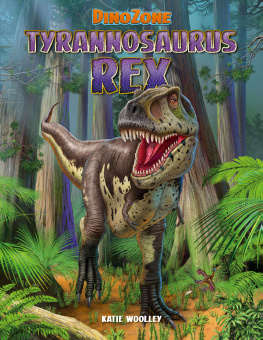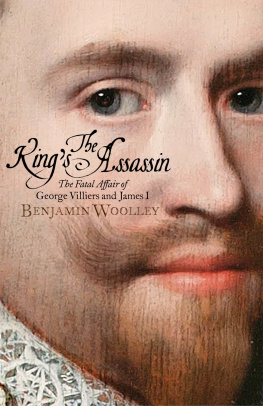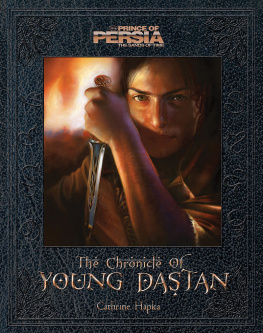Persia Woolley - Child of the Northern Spring
Here you can read online Persia Woolley - Child of the Northern Spring full text of the book (entire story) in english for free. Download pdf and epub, get meaning, cover and reviews about this ebook. year: 1988, genre: Non-fiction. Description of the work, (preface) as well as reviews are available. Best literature library LitArk.com created for fans of good reading and offers a wide selection of genres:
Romance novel
Science fiction
Adventure
Detective
Science
History
Home and family
Prose
Art
Politics
Computer
Non-fiction
Religion
Business
Children
Humor
Choose a favorite category and find really read worthwhile books. Enjoy immersion in the world of imagination, feel the emotions of the characters or learn something new for yourself, make an fascinating discovery.
- Book:Child of the Northern Spring
- Author:
- Genre:
- Year:1988
- Rating:5 / 5
- Favourites:Add to favourites
- Your mark:
- 100
- 1
- 2
- 3
- 4
- 5
Child of the Northern Spring: summary, description and annotation
We offer to read an annotation, description, summary or preface (depends on what the author of the book "Child of the Northern Spring" wrote himself). If you haven't found the necessary information about the book — write in the comments, we will try to find it.
Child of the Northern Spring — read online for free the complete book (whole text) full work
Below is the text of the book, divided by pages. System saving the place of the last page read, allows you to conveniently read the book "Child of the Northern Spring" online for free, without having to search again every time where you left off. Put a bookmark, and you can go to the page where you finished reading at any time.
Font size:
Interval:
Bookmark:
"There's always room for one more interpretation of the Arthurian Matter of Britain-especially when it's approached with the warmth and rich detail to be found in Persia Woolley's prose. This chronicle of Guinevere's youth and her subsequent marriage to Arthur is a wonderful blend of mythical fact and historical speculation that provides an engagingly fresh glimpse at the well-known cast of characters while retaining the underlying resonance so important to any version of the Arthurian Matter." -Charles De Lint, author of Yarrow In this captivating tale of Arthurian legend and grandeur seen through the eyes of Guinevere, we meet the young princess as she roams the wilds of northern Britain with her father's Celtic court. Often portrayed as a weak-willed, spoiled prima donna, Guinevere here comes alive as a high-spirited, passionate woman, schooled by her father in the arts of diplomacy and raised to be queen. When she is chosen by Arthur to be his wife and High Queen of Britain, Guinevere's independence wars with her family loyalty. As she journeys to Westminster, she learns from Merlin and others in King Arthur s retinue of the grand destiny of which she is a part, of her bethrothed and his history. As the wedding approaches and hints of rebellion abound, she learns too that more is at stake than the naming of a new King. For the old gods, pagan and Druid, are in revolt against the new Christian church, and the scattered kingdoms-Saxon, Irish, and Celt-are stirring
(continued from front flap) from their uneasy peace under Arthur's political alliance. This is Arthurian epic at its best-filled with romance, adventure, authentic historical detail, and a landscape alive with the portents and magic of Britain m the Dark Ages. In the words of Geoffrey Ashe, author of The Discovery of King Arthur, "This is truly original. As a re-creation of the legend in a version closer to the realities, it's far better than anything else I've read.... Here, I think, everything is right." About the Author Persia Woolley is a journalist and scholar specializing in the Dark Ages. This iL her first novel, the first of a projected trilogy. She lives in northern California. Jacket design by Jackie Seow Jacket painting by Wilson McLean Author photograph by Curtis Fukuda
CHILD Of the NORTHERN SPRING Persia Woolley Poseidon Press New York
This novel is a work of fiction Names, characters, places and incidents either are the product of the author's imagination or are used fictitiously Any resemblance to actual events or locales or persons, living or dead, is entirely coincidental. Copyright 1987 by Persia Woolley All rights reserved including the right of reproduction in whole or in part in any form Published by Poseidon Press A Division of Simon & Schuster, Inc Simon & Schuster Building Rockefeller Center 1230 Avenue of the Americas New York, New York 10020 POSEIDON PRESS is a registered trademark of Simon & Schuster, Inc. Designed by Amy Lamb Map by Jean Yee Wong Manufactured in the United States of America 13579 10 8642 Library of Congress Cataloging in Publication Data Woolley, Persia, date Child of the northern spring 1 Guenevere, Queen (Legendary character)- Romances. 2 Lancelot (Legendary character)- Romances 3. Arthurian romances I Title PS3573 068C4 1987 813' 54 87-2294 ISBN 0-671-62200 5
To AUTUMN AND SHARON, JOHN AND NICK, WITHOUT WHOSE SUPPORT THIS STORY MIGHT NOT HAVE BEEN TOLD, AND TO MAMA DEE, WITHOUT WHOM THE TELLER WOULD NOT HAVE BEEN
AUTHOR'S NOTE THERE ARE FEW STORIES better loved or more often told than those which make up the legends of King Arthur. What began as the tales of a Dark Age warlord have gradually developed into one of the great story cycles of Western civilization, full of archetypal themes and personalities. Over the centuries it's taken the form of folk history, morality story, grand romance, swashbuckling adventure or high fantasy, generally reflecting both the social climate and the personal bias of the particular teller of the tale. This adaptability is part of its charm and probably one reason it has survived so long and well. In recent years there has been a growing interest in looking behind myths of all kinds and retelling them in terms of human, rather than legendary, perspectives. This has led to some fascinating historical fiction, in which the cultures and climate of the times have a notable influence on the unfolding of the story. * I have made specific use of this technique throughout, but most especially in the development of Guinevere, who in the past has been presented too often as a two-dimensional character: either the shadow substance of a king's ill-made choice or the willful and spoiled beauty who ruins the kingdom without compunction. (This approach to Ar
8 Author's Note thur's queen seems to perpetuate the Victorian view of her character and provides a handy scapegoat for authors who need one.) The tales of Arthur's remarkable kingdom grew out of the Celtic Renaissance which rose as the Roman civilization deteriorated and the Anglo-Saxons began their invasions. From the scattered clues found in modern archeological studies, ancient folklore and the writings of Gildas (the only contemporary author we have from that time), there appear to have been more elegance, diversity of trade and education in the royal households of the Dark Age kings than was once thought. Many of these Celtic kings were descended from the tribes who had resisted the coming of the Romans four hundred years before, and they rallied to oppose the Saxon invasions when the Empire crumbled. They were a rugged, wild, stormy lot, with a long tradition of queens who were co-rulers with their husbands. The activities of these vital and exciting women were recorded in both Celtic legend and Roman history, and any daughter of theirs was likely to be an independent and remarkable person in her own right. It is within this context that I have explored the background of Guinevere. These pages won't offer the dragons and jousts that Malory presented, but rather times of change and evolving thought, external threats to civilization as the Britons knew it and internal bickerings such as even modern-day countries experience. Like all other Arthurian tale-spinners, I owe an enormous debt to those who have told the story before, and to the various scholars who are engaged in serious pursuit of the Once and Future King. The specifics of Gwen's childhood are largely my own invention, based on what I thought would explain her actions and behavior in the later story of her adult years. Cultures and ideas may change over the centuries, but the basic psyche of mankind evolves much more slowly. No doubt that's why archetypal tales remain popular through the centuries. It is easy to become very picky about language in a work such as this. For instance, would these people use slang? Can one use the term "lunch" or "book" when the word itself wasn't invented for a number of centuries to come? If this principle is carried to its logical extreme, one couldn't even use the Anglo-Saxon and French words which make up such a large body of our vocabulary, since technically they weren't part of the Celtic tongue. In the end I decided that the purist should view this book as a translation; the characters themselves would have
Author's Note 9 been speaking Brythonic or Latin or Goidelic anyway, and whether they called it lunch or the midday meal, book or tablet, the concept remains the same. For ease of identification, I have generally used modern place names to denote specific locales, even though the name itself may be AngloSaxon. Where an earlier historical name indicates a political division more appropriately (such as the kingdom of Rheged), I've incorporated that. What we call Old Sarum I allowed the less ponderous name of Sarum simply because it was so much younger then. The problem of the Welsh and the Cumbri is a bit stickier. The word "Cumbri" means "companions," and it is the name by which the British Celts have referred to themselves down through the ages. When the barbarians finally overran Britain these people were driven into the mountains of the north and west, where they gave their names to such areas as Cambria and Cumberland. The victorious Anglo-Saxons referred to these regions as Wales and North Wales, meaning "the land of the strangers." Thus, ironically, the natives found themselves branded as aliens by the newly arrived interlopers, a situation they thoroughly resented. I've referred to the specific geographical area of Wales by its popular present-day name, but speak of the people as the Cumbri, in part to show the kinship between the various petty kingdoms and at the same time to indicate the extensive range of their holdings, which were far greater than modern Wales. As to the spelling of personal names, they mostly follow the Malory version unless there is an equally well known Celtic form. Since both legendary and historical characters run throughout the tale, I have occasionally opted for the historical reference as put forth by John Morris in his Age of Arthur. Theodoric is a real character, as are Urien, Gildas, Agricola Longhand, Cunedda, Maelgwn and probably both King Mark and Tristan. One of the great delights of Arthurian study is the interweaving of the verifiable and the mythical, for each contributes a kind of magic far more lasting than simple spellcasting. Because this is a work of fiction, I've presented things as colorfully as possible while still trying to stay within the pattern of thought or behavior that was probably prevalent. When I began this project I had no idea it would involve so much
Next pageFont size:
Interval:
Bookmark:
Similar books «Child of the Northern Spring»
Look at similar books to Child of the Northern Spring. We have selected literature similar in name and meaning in the hope of providing readers with more options to find new, interesting, not yet read works.
Discussion, reviews of the book Child of the Northern Spring and just readers' own opinions. Leave your comments, write what you think about the work, its meaning or the main characters. Specify what exactly you liked and what you didn't like, and why you think so.










